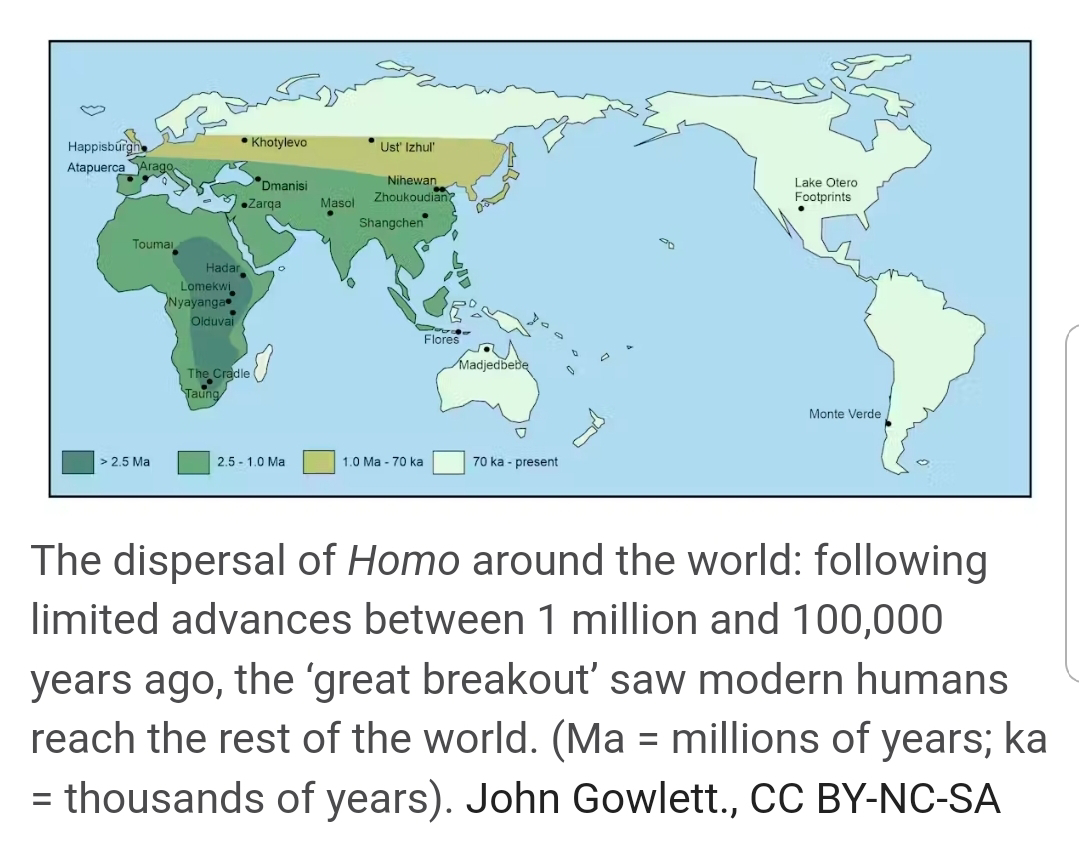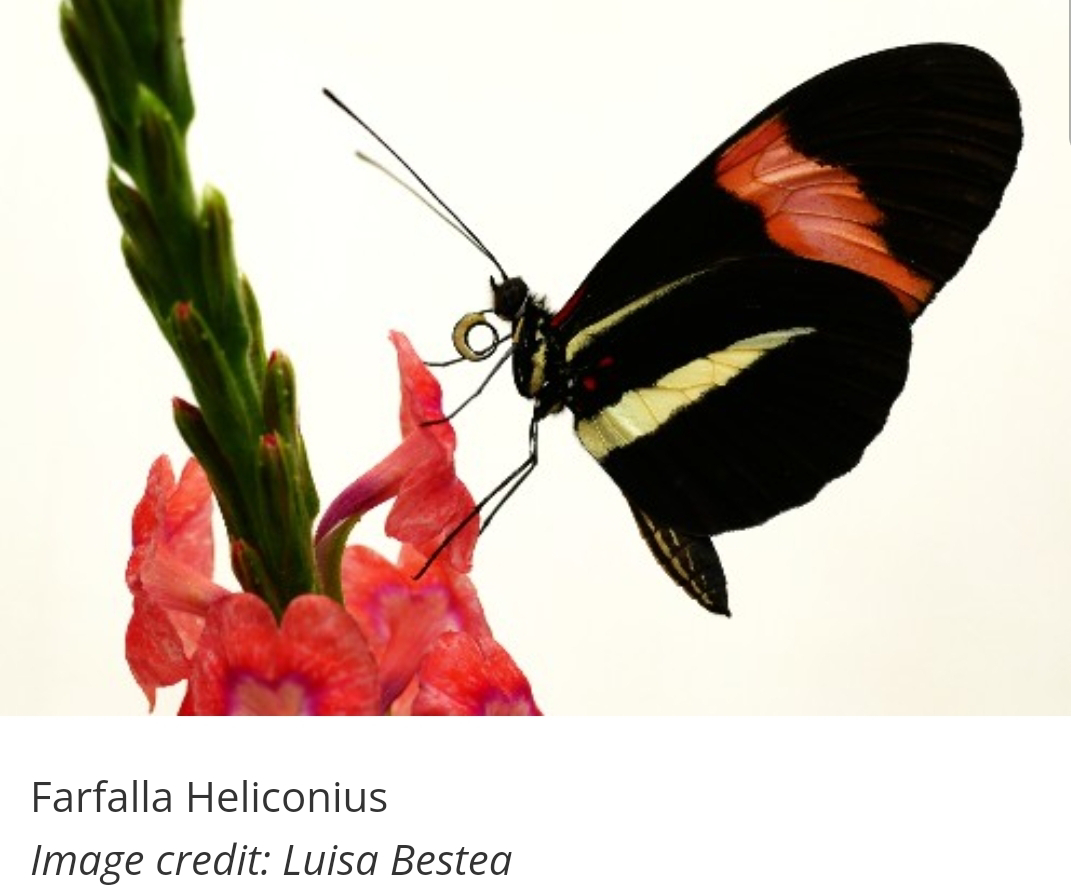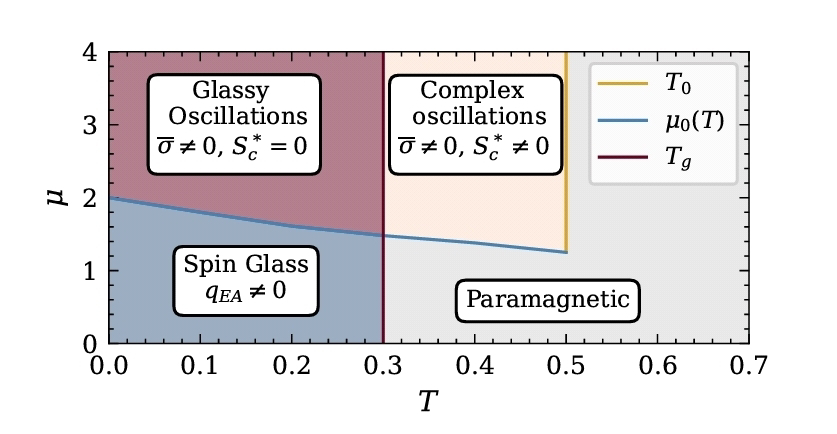Translate
venerdì 7 gennaio 2022
# evol: viruses as a facilitator / driver of horizontal gene transfer among eukaryotes
martedì 26 novembre 2024
# evol: nomads, a whole story of human evolution.
venerdì 4 novembre 2022
# gst: apropos of transitions, disordered systems mimic genetic evolution.
giovedì 19 luglio 2018
# behav: social isolation vs. evolutionary dynamics
<< For some animals—such as beetles, ants, toads, and primates—short-term social isolation can be just as vital as social interaction to development and long-term evolution. In a review published July 17 in the journal Trends in Ecology & Evolution, two evolutionary biologists describe approaches for testing how an animal's isolation might impact natural selection and evolution. >>
Social isolation: Animals that break away from the pack can influence evolution. Cell Press. Jul 17, 2018.
https://m.phys.org/news/2018-07-social-isolation-animals-evolution.html
AA << suggest that the 'index of social isolation', the mismatch between actual and optimal social interaction experienced by individuals within a population, may play a key role in releasing cryptic genetic variation, adaptation rates, diversification patterns, and ecosystem-level processes. Evolutionary dynamics arising from social isolation could have significant impacts in applied settings such as conservation, animal breeding, control of biological invasions, and evolutionary resilience to anthropogenic change. >>
Nathan W. Bailey, Allen J. Moore. Evolutionary Consequences of Social Isolation. Trends in Ecology & Evolution. doi: 10.1016/j.tree.2018.05.008. Jul 17, 2018.
https://www.cell.com/trends/ecology-evolution/abstract/S0169-5347(18)30120-4
lunedì 31 gennaio 2022
# evol: the hypothesis of quasi-stochastic 'jazzy' metamechanics of biological evolution (in Arabidopsis thaliana)
venerdì 10 maggio 2019
# evol: an irrefutable evidence that they rose from the dead by an 'iterative evolution' process
<< the last surviving flightless species of bird, a type of rail, in the Indian Ocean had previously gone extinct but rose from the dead thanks to a rare process called 'iterative evolution'. >>
<< This is the first time that iterative evolution (the repeated evolution of similar or parallel structures from the same ancestor but at different times) has been seen in rails and one of the most significant in bird records. >>
The bird that came back from the dead. University of Portsmouth. May 9, 2019.
https://m.phys.org/news/2019-05-bird-dead.html
<< Fossil evidence presented here is unique for Rallidae and epitomizes the ability of birds from this clade to successfully colonize isolated islands and evolve flightlessness on multiple occasions. >>
Julian P Hume, David Martill. Repeated evolution of flightlessness in Dryolimnas rails (Aves: Rallidae) after extinction and recolonization on Aldabra. Zoological Journal of the Linnean Society, zlz018. doi: 10.1093/zoolinnean/zlz018. May 8, 2019.
https://academic.oup.com/zoolinnean/advance-article-abstract/doi/10.1093/zoolinnean/zlz018/5487031
martedì 15 gennaio 2019
# evol: nonlinear effects in shaping human evolution, the role of viruses
<< Human evolution used to be depicted as a straight line, gradually progressing from an ape-like ancestor to modern Homo sapiens. But thanks to next-generation sequencing, findings in recent years have shown that it wasn’t quite so orderly. Now, a new study is reporting new details about the role of viruses in shaping evolution, in particular, viral interactions between modern humans and Neanderthals. >>
<< Many Neanderthal sequences have been lost in modern humans, but some stayed and appear to have quickly increased to high frequencies at the time of contact, suggestive of their selective benefits at that time, >> Dmitri Petrov
New study reports the role of viruses in shaping evolution. Oct 5, 2018.
https://thesurg.com/virus-shaping-evolution
AA << hypothesized that interbreeding between Neanderthals and modern humans led to (1) the exposure of each species to novel viruses and (2) the exchange of adaptive alleles that provided resistance against these viruses. >>
David Enard, Dmitri A. Petrov. Evidence that RNA Viruses Drove Adaptive Introgression between Neanderthals and Modern Humans. Cell. 175 (2) P360-371.E13 Oct 4, 2018.
martedì 30 aprile 2019
# evol: hanging by a rope off a cliff, the vibrant pigments of bird feathers to trace the mechanics of evolution
<< All organisms depend on input of exogenous compounds that cannot be internally produced. Gain and loss of such dependencies structure ecological communities and drive species’ evolution, yet the evolution of mechanisms that accommodate these variable dependencies remain elusive. (AA) show that historical cycles of gains and losses of external dependencies in avian carotenoid-producing networks are linked to their evolutionary diversification. >>
Alexander V. Badyaev, Alexander B. Posner, et al. Cycles of external dependency drive evolution of avian carotenoid networks. Nature Communications volume 10, Article number: 1596 Apr 8, 2019.
https://www.nature.com/articles/s41467-019-09579-y
<< Think about hanging by a rope off a cliff. With one rope, if it disappears, you die. If you have two and one fails, you get to live. But having a third safety rope allows enough stability that you can make something out of the first two - like a ladder - and thus take control of your trajectory while the stability lasts, >> Alexander Badyaev.
What the vibrant pigments of bird feathers can teach us about how evolution works. University of Arizona. Apr 24, 2019.
https://www.eurekalert.org/pub_releases/2019-04/uoa-wtv042419.php
venerdì 4 aprile 2025
# gst: evolution of robust cell differentiation mechanisms under epigenetic feedback
lunedì 11 dicembre 2017
# evol-ethno: the fuzzy dispersal and interaction dynamics of ancient (early) nomads
AA << evaluate single versus multiple dispersal models and southern versus the northern dispersal routes across the Asian continent. They also review behavioral and environmental variability and how these may have affected modern human dispersals and interactions with indigenous populations >>
Christopher J. Bae, Katerina Douka, Michael D. Petraglia. On the origin of modern humans: Asian perspectives. Science. 2017; 358 (6368): eaai9067
doi: 10.1126/science.aai9067. Dec 8, 2017
http://science.sciencemag.org/content/358/6368/eaai9067
<< Homo sapiens reached distant parts of the Asian continent, as well as Near Oceania, much earlier than previously thought. Additionally, evidence that modern humans interbred with other hominins already present in Asia, such as Neanderthals and Denisovans, complicates the evolutionary history of our species >>
Revising the story of the dispersal of modern humans across Eurasia. Technological advances and multidisciplinary research teams are reshaping our understanding of when and how humans left Africa - and who they met along the way. Dec 7, 2017
http://www.shh.mpg.de/742617/human-dispersals-africa
https://www.sciencedaily.com/releases/2017/12/171207141724.htm
<< Climate is a key factor determining the types of vegetation that can grow in an ecosystem. By recreating the plant foods and habitat available at a given time, it is possible to learn about changes that occurred during important transitions in the evolution of humans >>
Marie DeNoia Aronsohn. The Way We Were: Climate and Human Evolution. Dec 1, 2017.
https://m.phys.org/news/2017-12-wereclimate-human-evolution.html
http://blogs.ei.columbia.edu/2017/12/01/the-way-we-were-climate-and-human-evolution/
sabato 5 ottobre 2019
# evol: echolocation, a prime example of convergent evolution
<< Echolocation is a prime example of convergent evolution, the independent gain of similar features in species of different lineages. >>
<< Distantly related species entering similar biological niches often adapt by evolving similar morphological and physiological characters. How much genomic molecular convergence (particularly of highly constrained coding sequence) contributes to convergent phenotypic evolution, such as echolocation in bats and whales, is a long-standing fundamental question. >>
AA << find that the gene set most overrepresented (q-value = 2.2e-3) with convergent substitutions in echolocators, affecting 18 genes, regulates development of the cochlear ganglion, a structure with empirically supported relevance to echolocation. >>
Amir Marcovitz, Yatish Turakhia, et al. A functional enrichment test for molecular convergent evolution finds a clear protein-coding signal in echolocating bats and whales.
PNAS doi: 10.1073/pnas.1818532116 Sep 30, 2019 https://www.pnas.org/content/early/2019/09/27/1818532116
Krista Conger. Scientists uncover genetic similarities among species that use sound to navigate. Stanford University Medical Center. Oct 4, 2019. https://m.phys.org/news/2019-10-scientists-uncover-genetic-similarities-species.html
mercoledì 23 dicembre 2015
# s-evol: the role of Ediacarans on the evolution of others
<< The fossil group called the Ediacaran biota have been troubling researchers for a long time >>
In this study the Ediacaran biota << played an enabling role in bilaterian evolution similar to that proposed for the Savannah environment for human evolution and bipedality >>
http://www.alphagalileo.org/ViewItem.aspx?ItemId=159128&CultureCode=en
Graham E. Budd, Soren Jensen. The origin of the animals and a ‘Savannah’ hypothesis for early bilaterian evolution. Biological Reviews, 2015; DOI: 10.1111/brv.12239
http://onlinelibrary.wiley.com/doi/10.1111/brv.12239/abstract
giovedì 7 novembre 2024
# brain: mosaic evolution of a learning and memory circuit in Heliconiini butterflies.
martedì 25 marzo 2025
# gst: droplet bag formation in turbulent airflows.
mercoledì 2 marzo 2022
# life; a hypothetical externalization of knowledge effects; humans are thought to have decreased in brain volume since the end of the last ice age (3,000 y.ago)
mercoledì 10 ottobre 2018
# evol: dry, chaotic environment in the transition to modern (nomadic) humans
<< A progressively drying climate punctuated by variable wetter episodes may have precipitated the transition from our hominin ancestors to anatomically modern humans >>
Dryer, less predictable environment may have spurred human evolution. University of Arizona. Oct 8, 2018.
https://m.phys.org/news/2018-10-dryer-environment-spurred-human-evolution.html
R. Bernhart Owen, Veronica M. Muiruri, et al. Progressive aridification in East Africa over the last half million years and implications for human evolution. PNAS Oct 8, 2018 doi: 10.1073/pnas.1801357115









